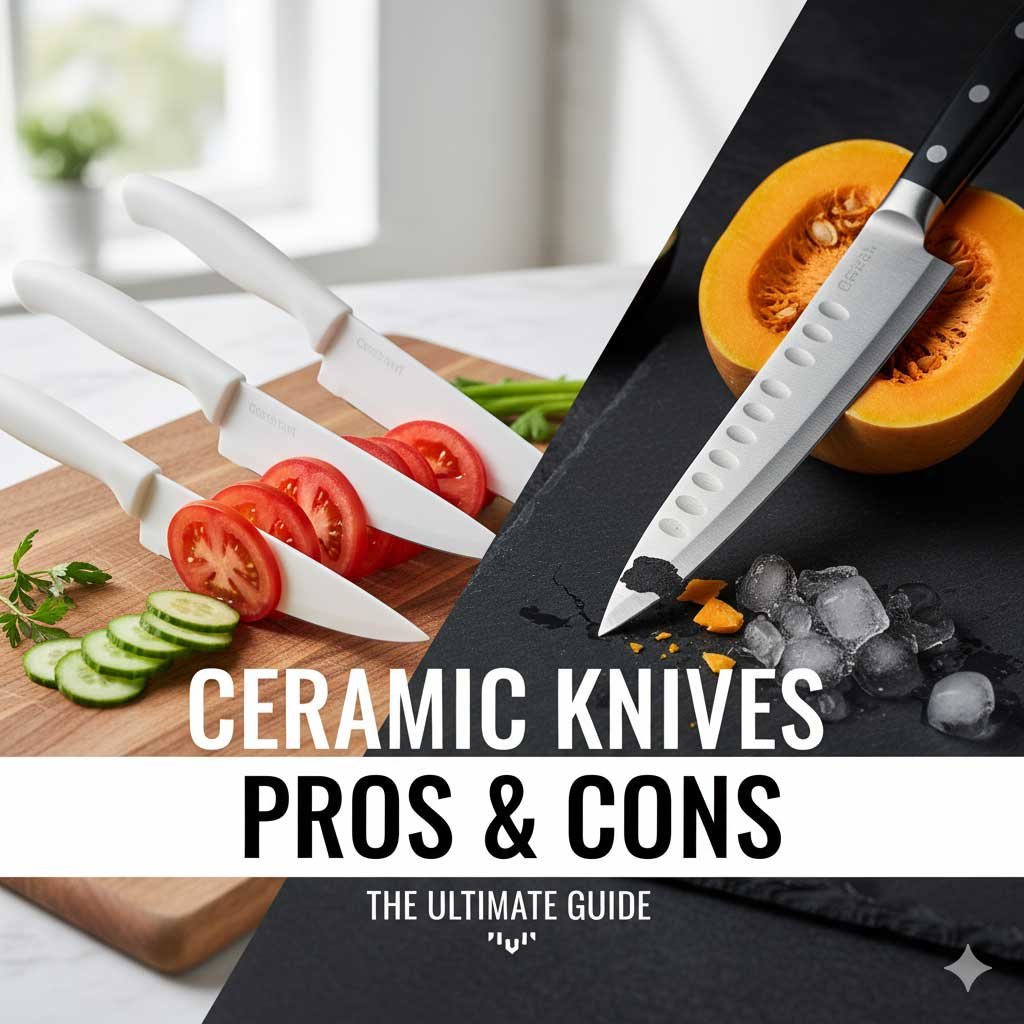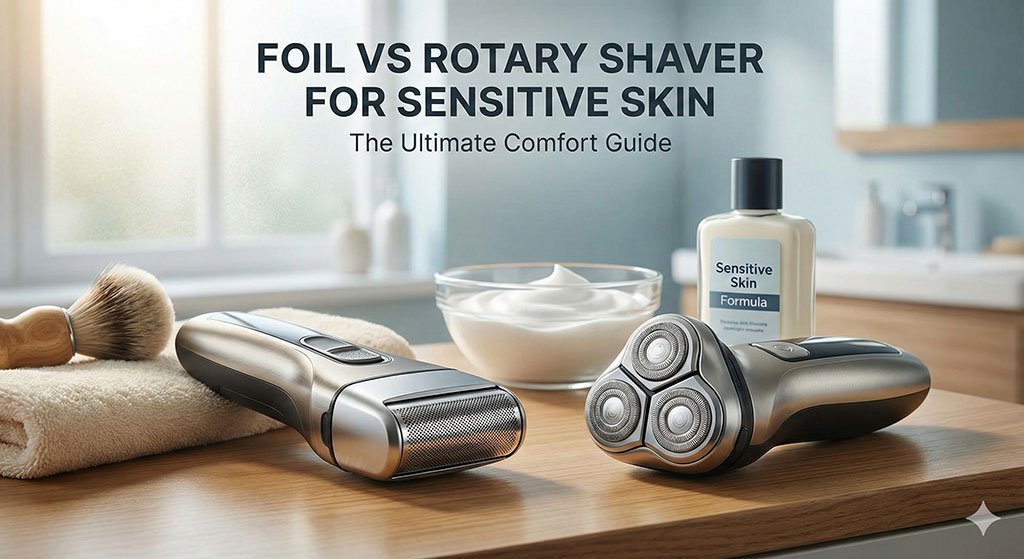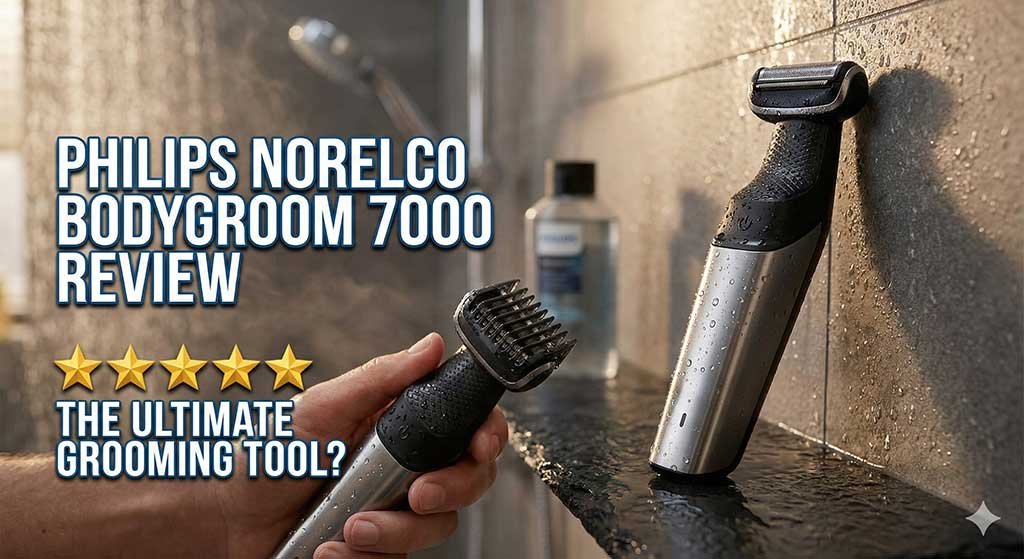The main pros of ceramic Knives are their exceptional, long-lasting sharpness, light weight, and complete resistance to rust and food reactivity, ensuring pure flavor. However, the crucial cons are that they are very brittle, easily chip if dropped or twisted, and require specialized, costly diamond sharpeners to maintain the edge.
You’re a passionate cook. You demand precision, sharpness, and ease in the kitchen. As you look for the next upgrade to your cutlery block, you’ve probably stumbled across a sleek, modern option: ceramic knives. They look incredibly sharp, feel feather-light, and certainly stand out from traditional stainless steel. But are they worth the investment?
Before you make a decision, you need a balanced, honest look at the ceramic knives pros and cons. Understanding these points will help you determine if these unique tools are a perfect addition to your culinary arsenal or a potential source of frustration. Let’s dive deep into the world of zirconium oxide to see what you’re really getting.

Table of Contents
The Pros of Ceramic Knives – The Razor Sharp Edge
Ceramic knives are not made from the same clay as your dinner plate. They are made from zirconium oxide, a very hard, dense, and non-metallic material. This composition gives them several remarkable advantages over their steel counterparts.
Incredible, Long-Lasting Sharpness
This is the biggest selling point. Ceramic is an extremely hard material. Because of this hardness, a ceramic blade can be honed to a razor-sharp edge that simply lasts longer than a steel edge.
- You will notice the difference immediately when slicing tomatoes.
- The blade glides through delicate herbs without bruising them.
- Many users report that their ceramic knives stay sharp for months, even years, without needing sharpening.
Superior Light Weight and Comfort
If you spend hours prepping ingredients, your hand can get fatigued. Ceramic knives are significantly lighter than their steel counterparts.
- The reduced weight makes them easier to handle during long cutting sessions.
- You will experience less strain on your wrist and arm.
- This feature is especially appreciated when performing repetitive tasks like dicing large quantities of vegetables.
Zero Rust and Non-Reactive Blade
Steel rusts. Steel can also react with acidic foods, which can slightly alter the taste of your ingredients over time. Ceramic blades eliminate both concerns.
- Ceramic is 100% rust-proof. You never have to worry about corrosion, even if the knife is accidentally left wet.
- The material is non-porous and non-reactive.
- This means your ceramic knife will not transfer any metallic taste or smell to your food. Your delicate fruits and vegetables will retain their pure flavor.
Easy to Clean
The non-porous, smooth surface of a ceramic knife makes cleaning a breeze.
- Food particles and residue do not stick easily to the blade.
- A quick rinse under the tap is often all it takes.
- The material does not absorb food odors, which is a major plus when switching between different ingredients like garlic and fruit.
Aesthetic Appeal
Let’s face it: ceramic knives look great. They often feature sleek black or bright white blades and modern handles. They add a touch of sophistication to any contemporary kitchen.
- They are a conversation starter when guests see them in your block.
- The unique look makes them stand out from standard cutlery sets.
The Cons of Ceramic Knives – The Hidden Drawbacks
While the sharpness is appealing, the hardness of ceramic is a double-edged sword. This same property is responsible for the main drawbacks you need to consider before buying.
They Are Brittle and Prone to Chipping
This is the most critical downside. Unlike steel, which might bend or roll when stressed, ceramic is brittle like glass.
- A ceramic knife can chip or shatter if dropped onto a hard floor.
- They are susceptible to breakage if you try to pry, twist, or bone ingredients.
- You must use them only for slicing, dicing, and chopping. Tasks like scraping ingredients off a cutting board with the side of the blade should be avoided.
- This fragility makes them unsuitable for cutting through bone, frozen food, or hard rinds like squash or pumpkin.
Difficult and Expensive to Sharpen
While the edge lasts a long time, eventually, all knives need sharpening. This process is much more difficult with ceramic knives.
- You cannot use a standard steel sharpening rod or whetstone.
- Ceramic knives require specialized electric sharpeners with a diamond-dust grinding wheel.
- Sending them away to a professional is the most reliable option, but this adds to the long-term cost of ownership.
- If you attempt to sharpen them yourself without the proper equipment, you risk damaging the blade permanently.
Not an All-Purpose Knife
Due to their fragility, ceramic knives have specific limitations on what they can cut.
- You will still need a traditional chef’s knife for heavy-duty tasks.
- They are not suitable for breaking down a chicken or cutting through thick crusty bread.
- They excel at produce, boneless meats, and soft cheeses, making them specialized tools rather than a primary workhorse.
Limited Blade Sizes
It is difficult to manufacture large, robust ceramic blades without making them excessively fragile and expensive.
- You will generally find ceramic knives in smaller sizes, such as paring, utility, and small chef’s knives (6-inch maximum).
- It is rare to find a large, full-sized 10-inch ceramic chef’s knife or a heavy-duty cleaver.
Initial Higher Cost
Compared to standard entry-level or mid-range steel knives, a ceramic knife often carries a higher upfront price tag. You are paying for the specialized manufacturing process and the highly pure material.
- While prices have become more competitive, they are still typically more expensive than comparable stainless steel models.
- The cost, combined with the risk of breakage, means you need to treat them as a delicate, valuable item.
Ceramic vs. Steel – A Quick Comparison
To help you visualize the differences, here is a simple comparison of the key traits. This will help you weigh the ceramic knives pros and cons side-by-side.
Feature | Ceramic Knife (Zirconium Oxide) | Stainless Steel Knife (Typically High-Carbon) |
Edge Retention | Excellent, stays sharp much longer. | Good, but requires more frequent sharpening. |
Hardness/Durability | Extremely hard, but brittle. Prone to chipping/breaking. | Hard, but flexible/tough. Can bend without breaking. |
Weight | Very light, reduces hand fatigue. | Heavier, offers more power and stability. |
Maintenance | Rust-proof, non-reactive. Easy to clean. | Prone to rust if not dried; may stain/tarnish. |
Sharpening | Difficult and specialized (diamond wheel required). | Easy, standard whetstone or honing rod. |
Best Use | Slicing delicate fruits, vegetables, and boneless meat. | All-purpose, heavy-duty tasks, bones, frozen items. |
Flavor Transfer | None (non-reactive). | Minimal, but highly acidic foods can sometimes react. |
Tips for Using and Caring for Your Ceramic Knives
If you decide the pros outweigh the cons for your kitchen, follow these simple rules to ensure your ceramic knives last for a long time. These practices are essential to avoid the biggest issues.
Choose the Right Cutting Surface
Never use ceramic knives on hard surfaces like glass, marble, or ceramic plates.
- These surfaces will cause the blade to chip instantly.
- Always use a wooden or soft plastic cutting board. This simple step prevents unnecessary damage.
Hand Wash Only
Even though they are dishwasher-safe, placing a ceramic knife in a dishwasher is a recipe for disaster.
- Other utensils can knock against the brittle edge during the wash cycle.
- Always wash your ceramic knives by hand with mild soap.
- Dry them immediately with a soft cloth and store them safely.
Store Them Safely
Protect the blade from accidental impacts in a drawer. You should never toss ceramic knives loosely into a drawer with other metal tools.
- Use a knife block with individual slots.
- If you must store them in a drawer, use a blade guard or a plastic sheath to cover the edge.
Keep Them for Specific Tasks
Limit your ceramic knife use to its strengths. Remember, it is a precision tool, not a demolition tool.
- Use it for beautiful, thin slices of cucumber.
- Use it for dicing onions without a metallic smell.
- Do not use it for splitting hard winter squashes or prying off bottle caps.
FAQ
No, absolutely not. The material is very hard, but it is also brittle. Cutting through bone, gristle, or hard frozen food will almost certainly cause the blade to chip or shatter. You must use a traditional stainless steel knife or a butcher knife for these tasks.
Yes, they do. While their edge retention is vastly superior to steel, the ultra-sharp edge will eventually dull with regular use. You might only need to sharpen them once every year or two, depending on how often you cook.
A sharp knife is generally safer than a dull knife because it requires less force and is less likely to slip. However, because ceramic knives are so light and incredibly sharp, you must exercise extreme caution. Their brittleness also presents a potential hazard if they shatter.
With proper care, a high-quality ceramic knife can last for many years, even decades. The main factor determining its lifespan is how carefully you handle it. Avoid dropping the knife, and it will serve you well for a very long time.
While the material itself won’t be damaged by the water or detergent, the mechanical action inside a dishwasher is the danger. Knives clashing against other items can easily nick or chip the brittle ceramic blade. Hand washing is always recommended for the longevity of your knife.
No. Quality varies significantly. Cheaper ceramic knives may use lower-grade zirconium oxide, making them more prone to chipping and less able to hold a fine edge. Look for knives made from high-density, purified zirconium oxide from reputable brands.
Professional chefs need an all-purpose knife that can handle virtually any task without worry, from deboning to rapid, high-impact chopping. Steel offers the flexibility and durability needed in a fast-paced, high-volume kitchen. Ceramic knives are often used by chefs, but only for specific, delicate slicing tasks.
Conclusion
Choosing the right knife is a personal decision that impacts your cooking enjoyment. Understanding the trade-offs of ceramic knives pros and cons is key to making a smart investment. These knives offer unparalleled, long-lasting sharpness, a feather-light feel, and a completely rust-proof blade, making them ideal for precise vegetable and boneless meat preparation.
However, their extreme brittleness, specialized sharpening needs, and inability to handle heavy-duty tasks mean they work best as a specialized partner to your reliable steel workhorse. If you treat them gently and respect their limitations, ceramic knives will undoubtedly enhance your kitchen experience for years to come.



